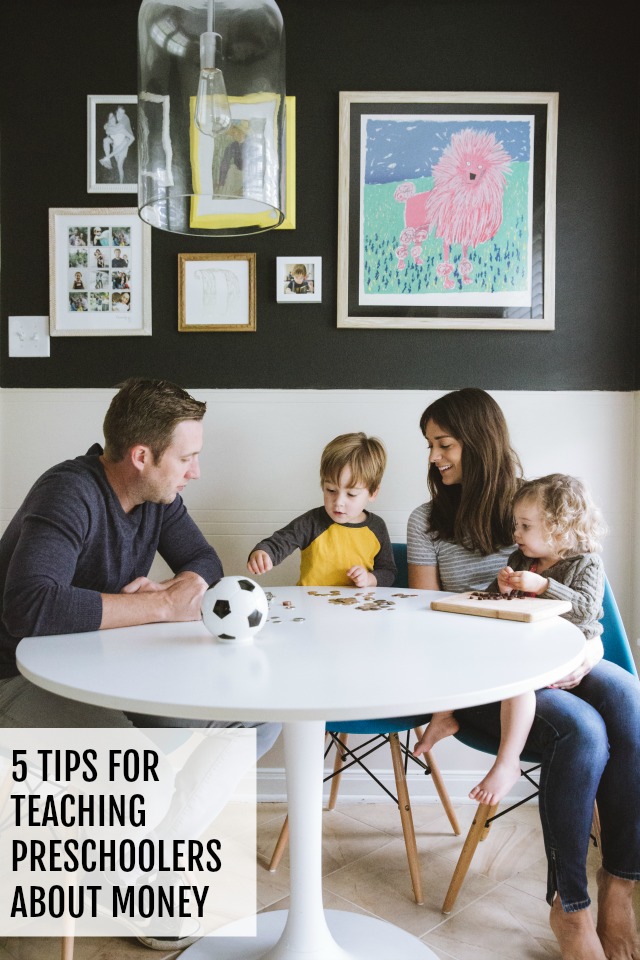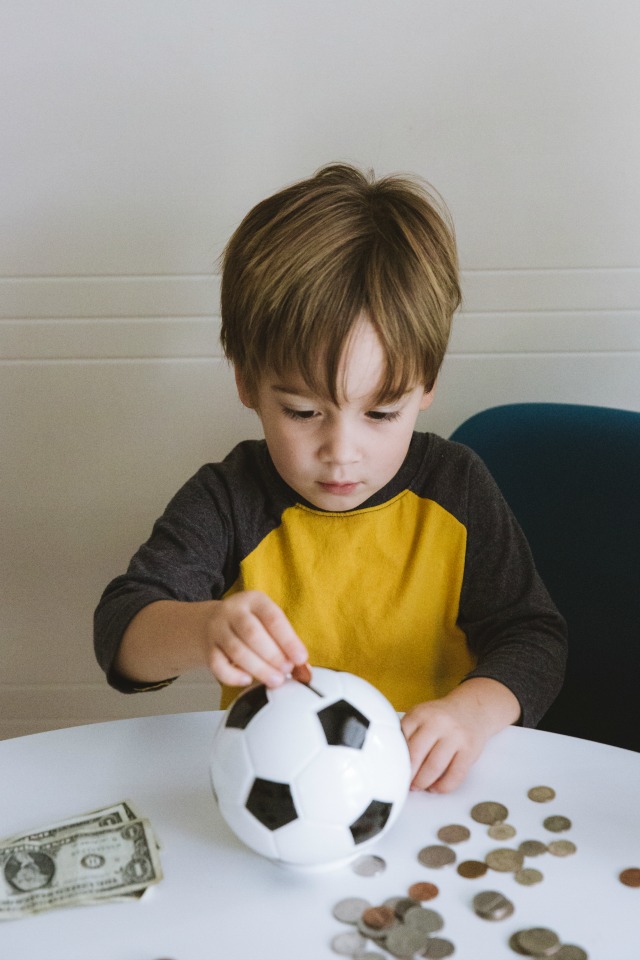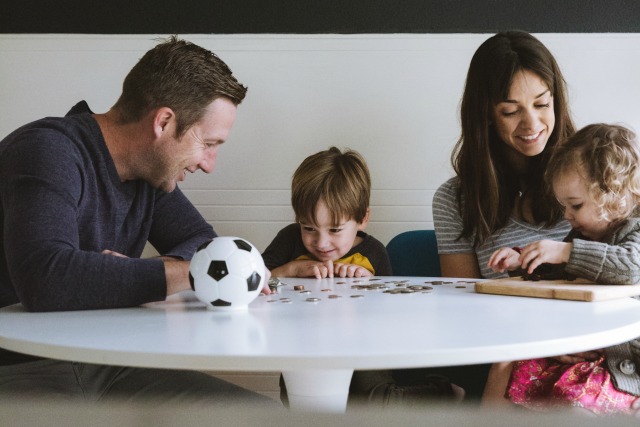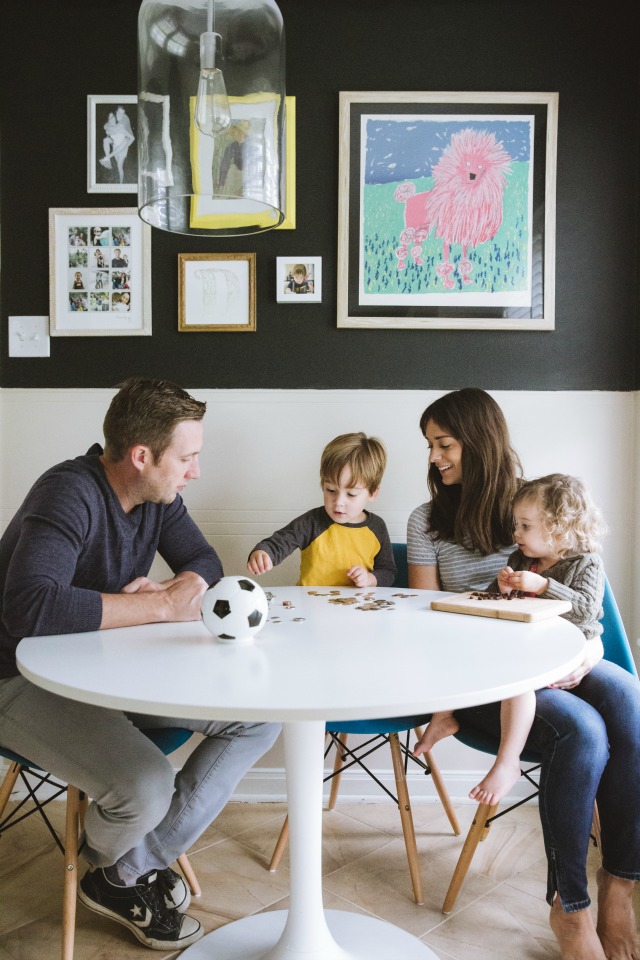I’ve had a checking and savings account since I can remember, and I loved getting my bank statements in the mail as kid. My parents encouraged us to save part of our birthday/holiday money, but we were also allowed to spend it on a special things we really wanted. For me, that was typically a plane ticket to visit my friend who lived in New York or gymnastics camp. I am thankful that my parents taught me financial responsibility from a young age. I teamed up with Frost Bank to share 5 financial must dos for new parents and 5 tips for teaching preschoolers about money.

Our Frost Bank teller was so sweet with Maxwell when I took him to open his new bank account. She took her time to explain what a bank account was, where the money goes, and how he could get his money out any time he wanted. It’s fair to note, I could have easily opened up a Frost Bank account online for Maxwell, but decided he needed the full experience of going to the bank. He also got a lolly pop, so there was that perk too! Frost Bank has a reputation of integrity and stability, technology that is always improving and award-winning customer service. Our teller gave us expert guidance and made us both feel very comfortable with this big milestone. My baby has a bank account, y’all!
5 Tips for Teaching Preschoolers about Money
1. Don’t be afraid to talk about money with your young kids. What is money? What do you do with money? How do you earn money? Maxwell is often sad when Daddy leaves to go to work in the morning, and we take this opportunity to talk about why Andy and I have jobs. I think it is important that kids understand that money is earned by working hard, and the money we earn is used to pay for things in your life. Maxwell understands that Daddy goes to work to earn money to pay for things like food, electricity, toys, and our house.
2. Get your toddler a piggy bank and open up a bank account. It’s important that kids (and adults) have a healthy relationship with money. Maxwell was gifted this soccer ball piggy bank as a baby. The piggy bank provides a great chance to strike up conversations about saving money. I took Maxwell to open a checking and savings account at Frost Bank. Maxwell had a lot of questions about banks, but the banker put his mind to ease and took her time to answer all of his questions.
3. Take your preschooler shopping. That’s right, I also think there is a lot to learn by shopping with real money, in a real store, to buy something that you really want. Maxwell loves Matchbox cars. So, when Grandma sent Maxwell $20 for his birthday last year we made a point to encourage him to save some money, but to also buy something special. He declared he wanted a new car! We gave him 2 dollars and took him to the grocery store to pick out exactly the car he wanted. We gave him the money and let him stand in line and go through the process of paying for his new toy. He has tons of cars, but he ALWAYS refers to this particular car as “the car I bought myself!”
4. Encourage delayed gratification. Delayed gratification is something that I struggle with, but thankfully Andy is a patience pro. Delayed gratification is when you resist a smaller but more immediate reward in order to receive a larger reward later. We intentionally teach this skill by setting up real life scenarios where Maxwell has to earn the item he really wants.
The most recent delayed gratification lesson was with a car transporter. Maxwell really, really wanted a car transporter. And as easy (and fun) as it would have been to just buy him the $13 car transporter, together we created a plan for Max to earn his new toy. It was as simple as a hand drawn chart on the fridge where he was in charge of taking the dishes to the sink after dinner, picking up his toys every night, and brushing his teeth before bed. If he did all 3 things without being asked every night for a week, he would earn the car transporter. He did it and he loves his car transporter more than any other toy in our house. Bonus, he is still taking his dished to the sink after dinner.
5. Intentionally teaching the difference between needs and wants. A need is something you must have to survive like water, vegetables, or a bed. Wants are something that are nice to have, but you can live without. Things like candy, toy cars, and cupcakes. We want our kids to have a realistic expectation of what they should feel entitled to or what they actually need. In reality, it’s not much. I talk to Max about needs often at the grocery store. He inevitably thinks we need a candy car in the checkout line. This is the perfect opportunity to talk about making good choices and why we don’t actually need a candy bar.
Whatever life’s brought your way, Frost’s bankers and financial advisors are ready with prudent financial recommendations to help you make smart decisions with your money through all of the milestones ahead. I encourage you to get your kiddo a checking and savings account at Frost Bank and start the conversation about money today.




Leave A Reply!